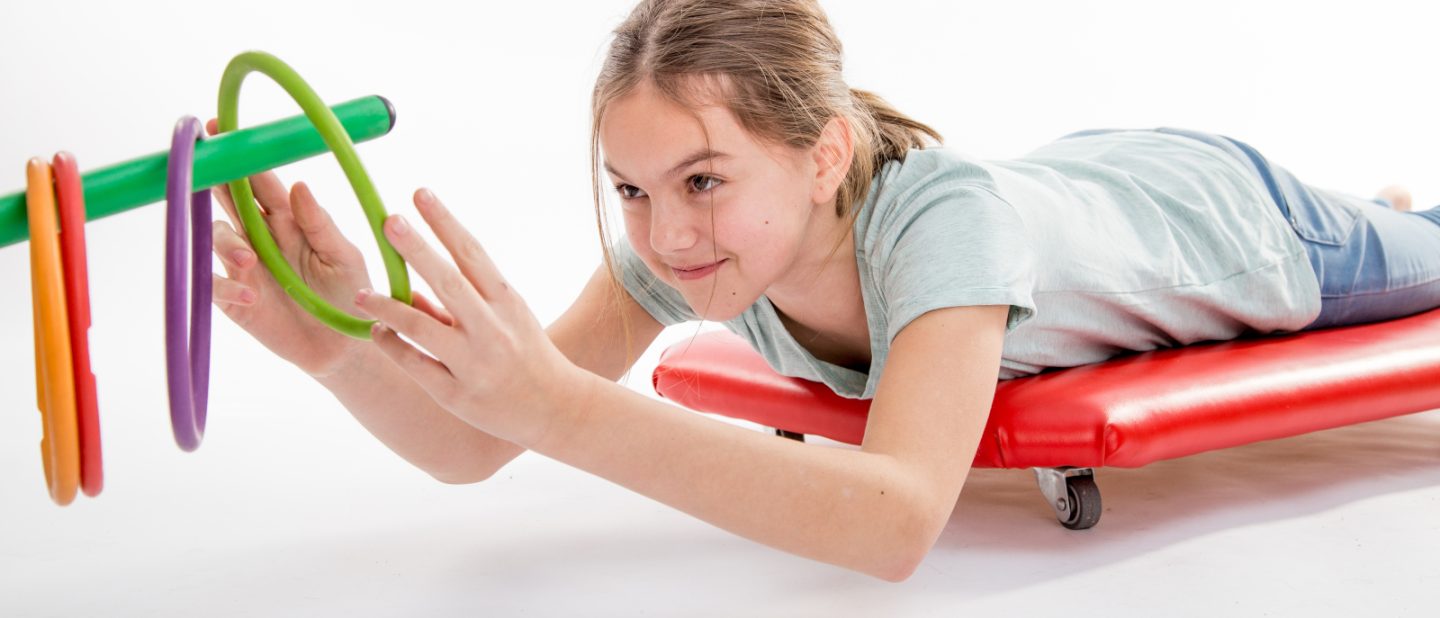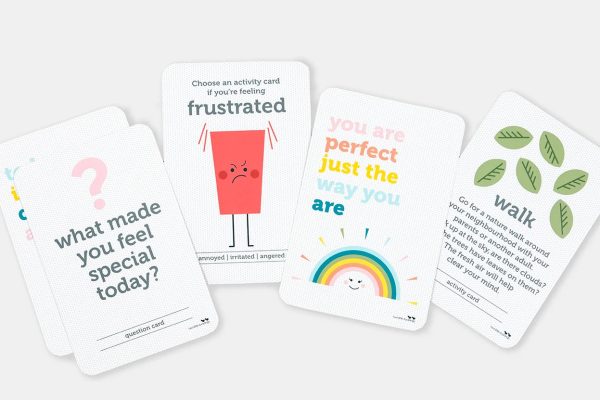
Scooter board activities used in occupational therapy
By Samantha Berger, MS, OTR/L and edited by Alice Lockwood
My favourite toys and pieces of equipment are those that are open ended, lending themselves to a variety of therapeutic and playful uses. A scooter board is one such piece of equipment!
The scooter board can be used either inside or outside. It can be used in a variety of positions: sitting, prone, supine or even standing for the most adventurous of friends. It can be used as a sensory tool impacting the vestibular, proprioceptive and tactile systems or it can be used as a strengthening tool for the arms, legs or core. Talk about a good bang for your buck!
Scooter Board Activities Used in Occupational Therapy
The following are just a few of my favourite scooter board activities used in occupational therapy. Try them out and let the good times roll! See what I did there?
1. Ab Roll-Outs
Forget the pilates reformer classes you’ve been paying for and try this exercise out yourself and then let your child take a turn. Start in a quadruped (hands and knees) position with hands on the scooter board and knees on the floor. I recommend having a soft surface for your knees (e.g., folded towel, floor mat) for increased comfort. Keeping knees stationary and shoulders stacked over elbows and wrists, push the scooter board out in front of you, approximately 1-foot to start and then pull it back toward you to the starting position. Your core stays engaged the entire time.
Increase the difficulty by increasing the distance in which you push the scooter board out away from you. Another way to increase the difficulty is to perform this exercise laterally (off to the side) in addition to performing it in midline. Increase the difficulty again by increasing the number of consecutive roll-outs performed before taking a break. To make this more engaging for your child, assign your child the role of bulldozer and set up blocks for them to knock down with each roll-out. Return the bulldozer to the construction site (the starting position) and repeat.
2. Prone Propulsion
Looking for upper extremity or back extensor strengthening? Start in prone (lying on the stomach) on the scooter board, have your child use their arms to reach forward, place open palms on the floor and pull to propel themself forward across the floor. Decrease the challenge by using both arms simultaneously. Decrease the challenge further by having the child hold onto your hands, a PVC pipe or a hula hoop while you pull them forward, encouraging them to keep his head up.
To increase the challenge, have the child use a reciprocal pattern, alternating pulls one arm at a time (like a freestyle swim stroke.) To start, your child can travel in a straight line. To advance, set up obstacles for them to weave through.
3. Rope Pull
Don’t have a rope? Try using a skipping rope or a few scarves tied together. Attach one end of the rope to a heavy, stable surface (e.g., bedframe) to act as an anchor. Starting at the unattached side of the rope, have your child pull on the rope, one hand and then the other, to propel themself forward.
Your child can participate in several positions. Try having them sit criss-cross on the scooter board, making sure they keep their sitting balance with each pull of the rope. Try having their belly on the scooter, keeping feet off the floor and looking forward with neck extended. Or, try having them on their back with feet elevated facing the starting point and head in the direction of the ending point, pulling the rope to propel themself head-first.
4. Leg Press
If you’re in the need of some extra lower abdominal work or linear vestibular input, your child can make themself into a rocket ship with this leg press activity. Position your child on their back with their legs in a tabletop position (hips and knees flexed to 90 degrees) and feet up against the wall. 3, 2, 1, Blastoff! Encourage them to push their feet against the wall, extending at the hip and knee to propel themself backwards. Set up some soft targets for a moon landing and increase the distance of the target on later trials to inspire a more forceful take-off.
5. Wall Roll-Ups
If you’re working on upper extremity strength, bilateral coordination or forearm supination, this one is for you! From either a sitting (less challenging) or standing (more challenging) position, have your child hold onto the handles of the scooter and press the scooter board up against the wall. Then, roll it up the wall as high as possible and roll it back down slowly with control.
Increase the challenge by creating a “road” on which to drive the scooter using painter’s tape. The road can be vertical, horizontal, zig zag, figure eight, you name it!
This post was originally posted on the NAPA blog here and is republished with permission.
NAPA Centre provides both traditional and non-traditional therapies as recommended by professionals from around the world. They specialise in offering three-week intensive therapy programs tailored to each of our patient’s individualised needs. By utilising a wide variety of therapies and techniques they are able to target the unique goals of each of their families. Find out more at napa.com.au






